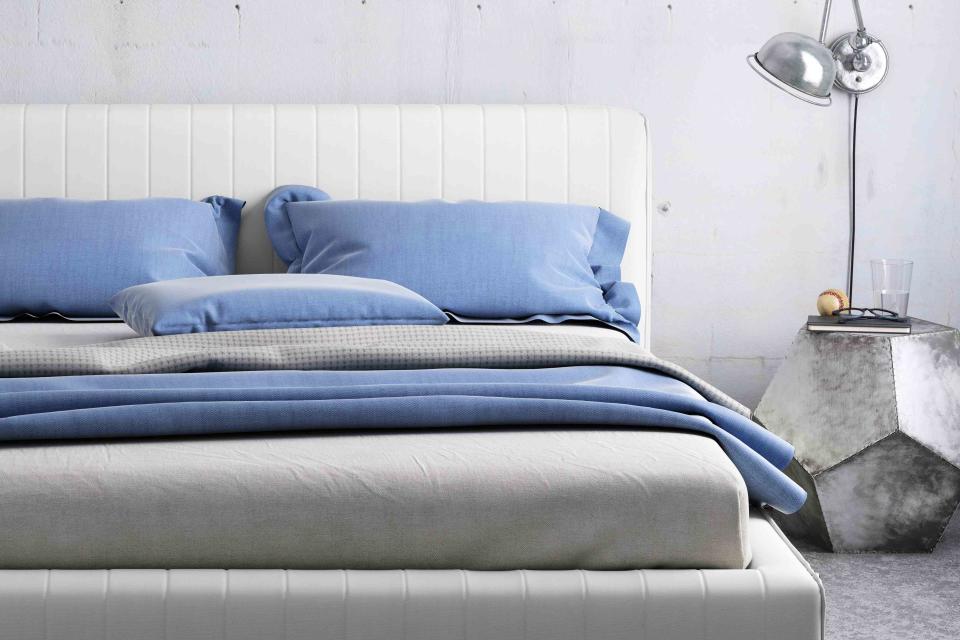Why Some Mattresses Contain Fiberglass—And How to Tell If Yours Does
Plus, some fiberglass-free alternatives.

Experience Interiors/Getty Images
There’s nothing quite like laying down in bed at night on a comfortable mattress and getting some shut-eye. But could that mattress you love and use at least eight hours a night (hopefully) be a potential source of health problems?
You might have recently heard news circulating about how fiberglass in mattresses may be dangerous, but is it really something to be concerned about? How do know if your mattress contains fiberglass? Here’s what the experts have to say.
Related:How To Choose a Mattress for a Good Night’s Sleep
What Is Fiberglass?
All mattresses sold in the United States are required to have a flame barrier. This is a good thing, because you don't want your mattress to catch fire. One of the most popular flame retardants is fiberglass because it's relatively inexpensive compared to other alternatives. Fiberglass is a type of reinforced plastic using glass fibers.
If you’ve been looking for a new mattress and are on a tight budget or already purchased one at a bargain price, there’s a good chance it contains fiberglass.
Is Fiberglass Safe?
Fiberglass itself isn’t unsafe, but exposing yourself to it is. Exposure can come from opening up your mattress (which there is no reason to do) or accidentally ripping it, whether with a sharp object or your pet scratching it with their nails.
But even if these things don’t happen, there still might be some risk of exposure, according to Ron Rudzin, president and CEO of Saatva, “There have been complaints that in some cheaply-made mattresses, the fiberglass can leak through the cover.”
While there’s no current research about the long-term effects of fiberglass exposure, Rudzin tells me there are some common issues that can arise when someone is exposed. “This includes itchy skin, sore throat, and red eyes. The particles could even reach the lower part of your lungs, causing lung scarring. Once fiberglass finds a way out of your mattress and into your living space, it’s nearly impossible to get rid of.”
How to Tell If Your Mattress Contains Fiberglass
“Mattress manufacturers aren’t required to disclose any of the flame-retardant chemicals they use, and harmful chemicals are often still used in mattresses made overseas. Brands that use fiberglass don’t typically advertise it," says Ricky Joshi, co-founder and CSO of Saatva.
He suggests always doing your research and looking carefully at the list of materials used. “You might see it listed as glass fibers or glass wool. If a manufacturer says you shouldn’t remove the cover, it’s a telltale sign there’s fiberglass underneath.”
What To Do If Your Mattress Has Fiberglass
You might want to consider purchasing an encasement that zips around the entire mattress. A high-quality mattress protector may help prevent fiberglass exposure. Check the mattress protector periodically to make sure it hasn't developed any holes or tears.
If you're ready to replace your mattress, consider a non-toxic mattress that doesn't contain fiberglass or chemical flame retardants, such as one from Saatva or Parachute. Wool is naturally flame-resistant, so it is frequently used in non-toxic mattresses. “We use natural thistle and organic New Zealand wool for our flame retardants. Every Saatva mattress is wrapped in organic cotton, so it’s soft, breathable, and eco-friendly," Rudzin says.
For more Real Simple news, make sure to sign up for our newsletter!
Read the original article on Real Simple.

